Spotlight on Betina Garcia
Feb 11, 2017
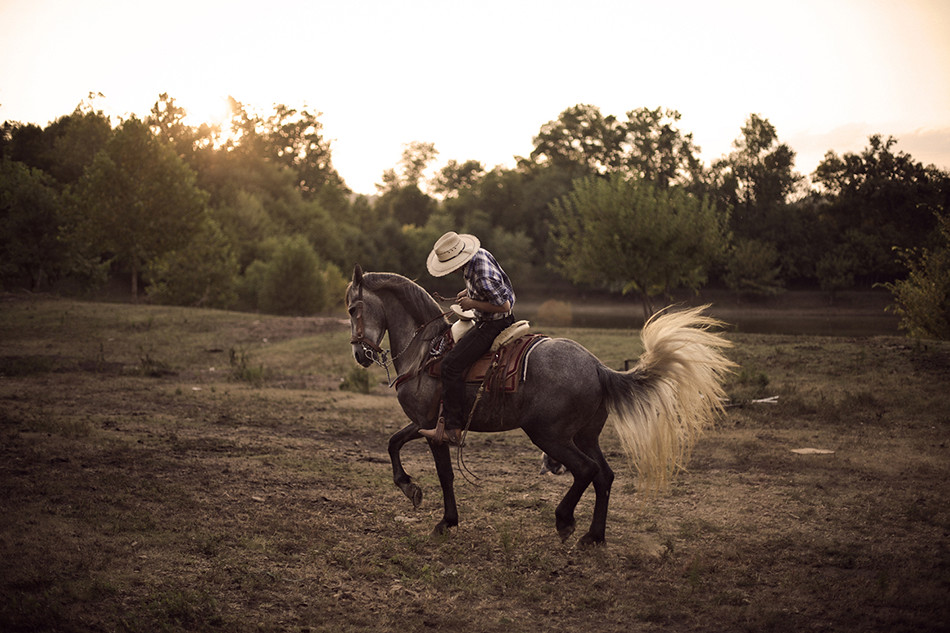
TID:
This image and others from your project are really nice. Can you tell us some of the backstory of the image and the project?
BETINA:
Thank you so much, Ross. Really appreciate the kind words. The project is called Rancheros and is focusing on Marcos Espinoza, a 17-year old guy who is half Guatemalan and Mexican but was born and raised in the U.S.
Both of his parents were illegals when they came to the U.S. His mom fled Guatemala in 1986 with her parents and two younger brothers and his dad came from Mexico City. They settled in California but moved to Kentucky in the summer of 2015. I wanted to focus on Hispanics in the U.S. as they are currently the biggest minority and never before in the history of America has a minority ethnic group made up such a large share of the youth. One-in-five schoolchildren are Hispanic and every fourth child born is Hispanic according to Pew Research Center. In the year 2060, Hispanics will be 28 percent of the population. This is why I found it interesting to take a look at their culture, as I believe it will have a huge impact on the American society.
Marcos is one of Hispanics who stays very true to his roots as both his father and grandfather come from a family of Rancheros. I thought it was interesting how he is sticking to that lifestyle, and for me this picture became the one that set the tone of the project and really showed his culture and personality in one. It also became about a place, but I had no idea of that at the time I took the picture. It is my first long-termed personal project that I’m still working on and will continue to do so in the years to come. The goal is tell about the Hispanic youth and culture through the eyes of one family and friends to uncover current issues on immigration in the US.
The project was made while I was doing an exchange at Western Kentucky University in Bowling Green, Kentucky.
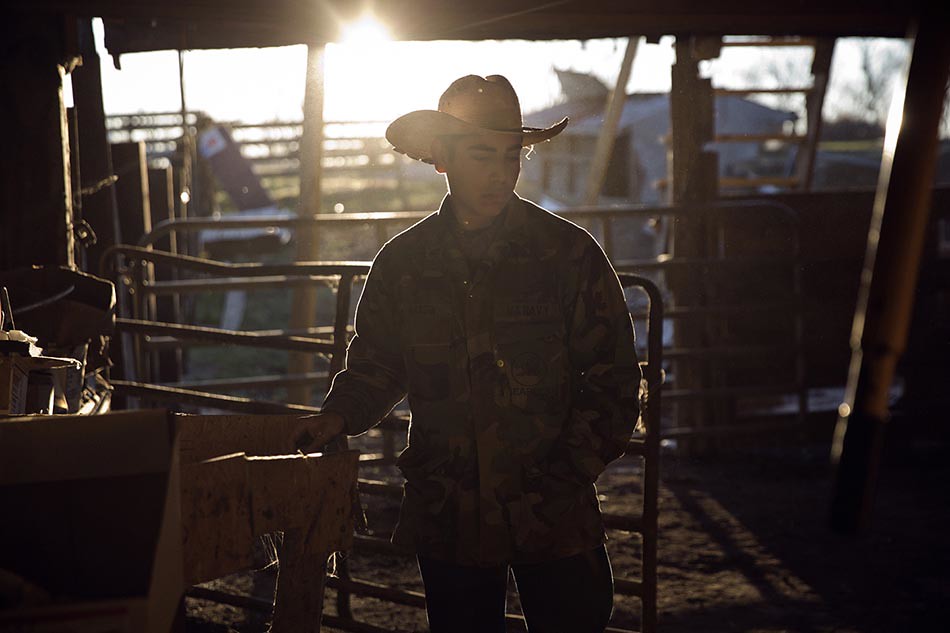
TID:
Tell us more about how you began this project. What drew you into it and why?
BETINA:
When I came to Kentucky in the fall of 2015 I knew that I wanted to do a story on Latinos in the U.S. it has always been something I have been very curious about. I have lived and traveled in South- and Central America and on several trips to the US I had talked to a lot of Latinos and they all said the same thing. They came in the search of a better life. So I kept asking myself why, and thought it was crazy that I spoke more Spanish than English in America.
Immigration and cultural identity is a very hot topic everywhere in the world and I believe it will only be more important with refugees having to settle in new countries worldwide. Being a daughter of two parents who wasn’t raised in the same country as me, I knew on a personal level how it can affect your cultural identity and how you can feel split between two cultures. I have never felt I really belonged one specific place, and I wanted to figure out how the youth and second generation immigrants felt especially in a country where so many are the same nationality. One week after I had arrived in Bowling Green I started looking for Latinos going to Hispanic restaurants, shops, churches, simply just everywhere I could think of. Just walking and biking in different neighborhoods and getting to know the community I would be a part of.
One night I was photographing some Hispanic kids playing on the street when I suddenly saw two guys on horses all dressed like cowboys. Something I would have thought I would see in Texas, but now in a low-income neighborhood in Bowling Green, Ky. One of them was Marcos who told me he lived on a ranch. I got his number and address and we agreed that I would go there the day after. I did and since then I tried to spend a lot of my time on the ranch, which was about 10 minutes on a bike from my home. I had also promised myself to stick to one project for a long time to getting a deeper look and really engage with a family. I really wanted to understand their life, culture and speak Spanish.

TID:
You’re from Denmark. As someone who is not from the country where the images were made, do you think it had an influence in approaching how you documented them? If so, in what ways?
BETINA:
I always think when a photographer goes to another country different from your own, it can help you see things in a new and different way. I get excited about going to a supermarket, a High School or anything really because it is so far from my own life, and what I’m used to see coming straight out of boring middle-class Denmark. I think it really helped being half Spanish and having lived in Central America, so I had an understanding for their culture, and that was what I approached them with and then it was a huge advantage that I speak Spanish if not I would not have been able to talk to the grandparents.
I also think I was at a point in my life where I had gone through a lot of difficult things. My Spanish father died very unexpected in 2013, and I had spent a lot of time thinking about roots, identity and how much our parents influence our life. I was longing and searching for ways to reconnect with my Spanish identity in a way. I’ve always felt big families are interesting as it reminds me of my Spanish family. I don’t think the country matter so much but if you have a personal relation to what you’re photographing it becomes easier to get access or connect with people.
I always think that the way you were raised, your views, values and person will influence on how you document somebody. That’s why it is so important to have different types of photojournalists in this world and why all nationalities, gender and minorities should be represented. We all look at the world very differently.
Being an outsider also made it easy to talk about the negative things in the American society, which they maybe wouldn’t have been comfortable telling an American. But I don’t know. Maybe I missed some things that somebody else would have seen.
TID:
How much time did you spend on this body of work, and how do you think that impacted your access?
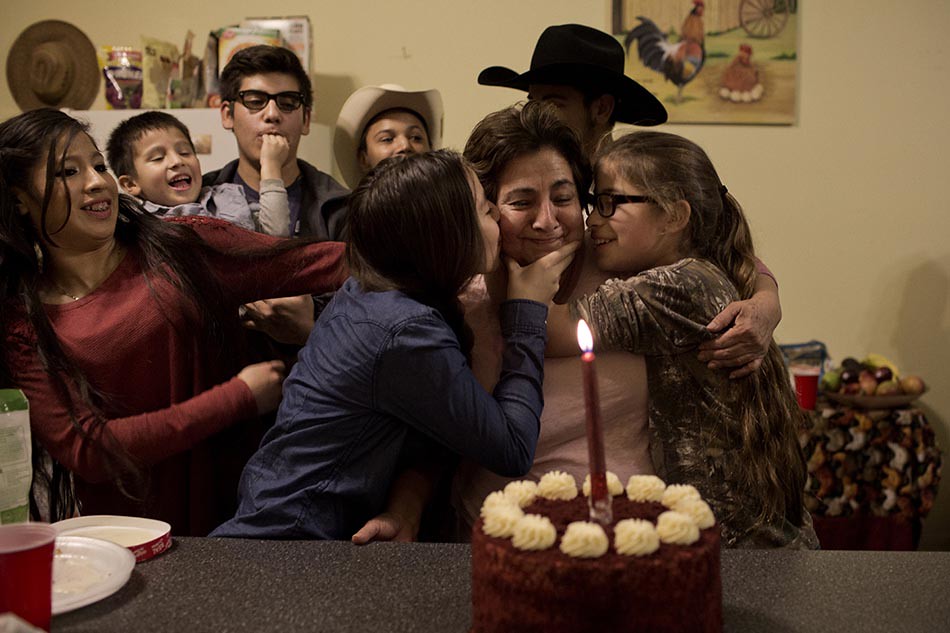
BETINA:
I met them the first time on the 28th of August, 2015 and said goodbye to them on the 10th of January the day before my Visa expired. I think that I was there one or two times a week. Sometimes I spent more time with them and sometimes less. It was a bit difficult as I had class Monday-Thursday till pretty late and actually it took me a long time to get into the house. Marcos and the guys would mostly hang outside and didn’t invited me inside the house at first. Not until they asked me to photograph the 15th birthday of their cousin Elisa.
That was in September. After that I went there and talked more to the mother and then she invited me inside the house and we became good friends and from that on it was easier. I also did a video piece about Marcos and the ranch and they really liked that, so it’s important to give something back and they make them understand what you’re doing and why. I started doing a short doc about the whole family for my final video project for school and after that I had full access and became really close with the family and when my school ended I spent a lot of time with them. I wish I had spent more time with them from the beginning just hanging out and having fun with them instead of being there so much as a photographer. I think sometimes it’s important to put down the camera and just be there as a person.
In the fall of 2016, I went with the family to Guatemala and spent 10 days with them where I was there 24/7, and it was completely different and the photography is way better also having had some distance and going back with a new perspective having reviewed the project. I don’t know why I was holding back in the beginning, but now I know that you just got to be there from the very beginning and spend days from morning till evening to understand their life and daily routines and to really get to know the ones you’re photographing.
TID:
I’m always interested in how photographers problem solve. What problems did you encounter along the way, and how did you overcome/work through them?
BETINA:
In the States it’s so difficult to get access to very simple things like school buses or schools and to photograph in restaurants and other places. Three times I got denied access on the school bus. I always have a theory of going there in person and never ask for permission before hand through email. Then you might be turned away but 70 percent of the time I succeed at getting access. It’s harder for people to deny you access if you’re looking them in the eyes.
I always tell myself is that if it feels uncomfortable, I’m on the right track, if not, I know I’m playing it too safe and not challenging myself. If it doesn’t succeed then I get really angry and frustrated at myself, or the situation, and maybe I cry for 5 minutes when I’m alone in the car or biking. Or scream really loud if I’m alone. For me, it’s important to get it out of my system and realize that when something bad happens there’s always something good waiting. I need to believe that if not I would go crazy, because sometimes life simply throw you a lot of shit. Sometimes it just wasn’t meant to be and you just have to accept that. Eat a pancake and move on. Try to make a new plan and think of others ways to get the pictures I can use instead of the one I couldn’t get.
When photographing illegal immigrants I was very concerned of the ethical aspect. What if one of my photos can deport somebody? I’m very concerned with this issue, as I would never forgive myself if somebody got deported because of me. So sometimes I’ve not posted pictures because of this reason.
Sometimes things get changed when you work with people and that can be really frustrating if you’re counting on an event and the family suddenly decide not to go, but then if you still stick with them you realize you might end up getting something better. Learning just to go with the flow and knowing there are some things you can’t control is crucial when doing documentary work.

One of the most difficult things was to get access and to make people understand why you are there, and what you are doing, so they trust you and stop noticing you and act natural around the camera. The way I solved the problem with the access was to bring prints, show them how they published the story in the newspaper at school and make them a book for Christmas.
The hardest thing when doing such a big project is to know what way to go. At first I thought Marcos was my main subject while I didn’t realize that his siblings and cousins were just as interesting. So you need to know that sometimes it’s okay to change focus and go with your gut and try to see things in the bigger picture.
TID:
What has surprised you about covering this project?
BETINA:
I think just seeing how big the community in Bowling Green is and how the Latinos have created their own community in a community was surprising to me. As soon as you open the doors to the ranch, it’s like you’re in a different world, as to the community I just drove through. How the ranch is a place for so many people to unite and how they help and are close to each other surprised me. And then I never knew anything about a Ranchero lifestyle. I had never been exposed to that before, so I got a profound understanding of a culture and their lifestyle. I think it’s interesting to see how the roles in the family haven’t changed much even though they have been living in the States for so long and how they transfer their Hispanic lifestyle surprised me. Sometimes I felt we were in a third world country at the ranch as they work with the cattle like they were still in Guatemala. I have always known that people from South America and Central America are very warm people but I’m still surprised and very honored the way the family took me in and made me feel as a part of their family.
TID:
What have you learned about yourself during this project?
BETINA:
I learned a lot as a person about cultural identity of young people. About family values and it has given me a lot of perspectives on my own life and how to treat my family. As a photographer I found out what a great pleasure it is to stick to one project. The more time you spend the deeper you get and the more you learn about people’s views, and really get to know them and can gain a unique access. I know now that I shall not be so scared of getting closer, that I’m the only one creating a limit. Even though such a big project requires a lot of energy that I had never felt more full of energy.
Most importantly, I think photography was a way of connecting with people and to find something about yourself that you’re missing through photography. In a way, the family helped me heal and deal with the loss of my father, as I found a family and support in them.
I love to work this way where you find a bigger issue or theme and work my way around it and to engage more people by telling small stories in one big story.
TID:
What have you learned about others?
BETINA:
I felt I learned a lot about being a refugee and how it is to be a second-generation immigrant. I did interviews with the grandfather and the mother, and I don’t think I have truly realized what it felt like and how hard it was for them coming to a completely new country. I think we’re all motivated by the same things in life. And what on the outside looks nice sometimes is different when you take a deeper look. The separation of societies in the States is way different than how a society works in Denmark but yet there are many similar tendencies that we also see in Europe in this point in time.
I think that Hispanic people have many of the same values as Americans do, but somehow they don’t talk or engage that much with each other. I have learned a great deal about religion and religion in the South in general as it is a very religious place compared to Denmark, and I tried and keep trying to get a better understanding of that as I believe that is the root of understanding why segregation is very much alive still today in the South. Looking at history and the past is crucial to understand the presence.
TID:
Now, onto the main image. Can you walk us through the moments leading up to it, and what you were thinking while making the image?
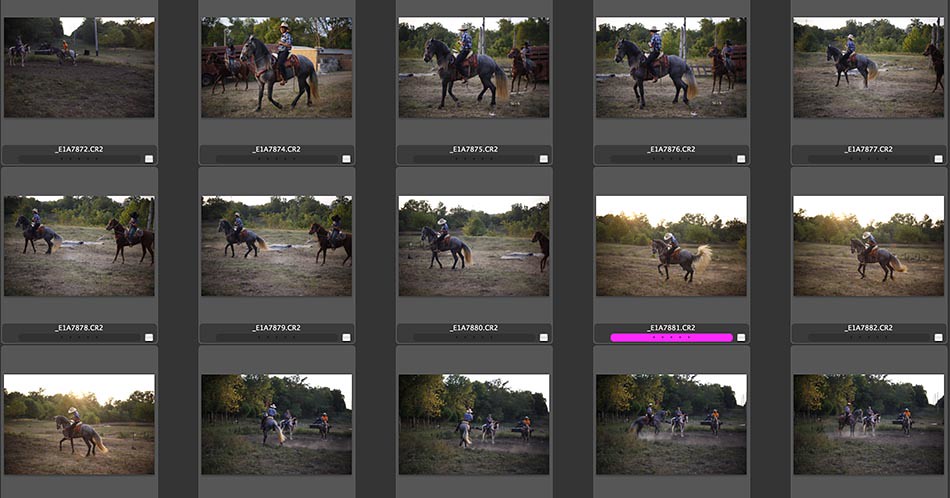
BETINA:
I remember being so happy and enthusiastic this day. It was my second time at the ranch and the first time I would spend a whole afternoon and evening there. I had just been at the ranch one hour and was standing behind the stable looking out and the sun was shining and there was the most beautiful light and I was filming Uncle Juan from a distance who was riding in the most beautiful light, when I was thinking that I needed to get closer. Suddenly Marcos came and I just tried to follow him with my camera when suddenly the horse moved its tail making it a frame, that gives it a bit more feeling and movement. I followed them as they crossed the field an instantly the moment was over. I don’t remember what I was thinking in the moment I took it but I had this special feeling. I looked at the screen and saw the picture and knew that this was going to be one of my key frames.
I remember it gave me a feeling in the stomach I have only had a few times before. That’s when I know I’m onto something good. That day I shot three of four of my favorite frames from the whole project. The first days you’re shooting it’s like every bone and fire in your body is so alert and is reacting to everything as you don’t think of oh this is my story you simply follow your natural gut, feeling, heartbeat and that makes the best photography if you ask me. Once you go too much into wanting something to be a specific story or thing it becomes forced. When sometimes I would be frustrated or not knowing which way to go I look at this picture and I remember this feeling of happiness and that is what keeps me going.
TID:
In conclusion, what advice would you have for someone wanting to do this type of work?
BETINA:
Spend time with the people with you’re photographing. It’s a matter of respect. How can you tell their story if you’re not willing to invest time? Become friends with the people you’re photographing, but always let them know that you’re there as a photographer. Get close and intimate from the very beginning. Tell about yourself and be clear about what you want. No matter what teachers, advisers, friends, and people say about your story keep going if it feels right to you. You don’t have to know what the exact story is but you got to have a vision or idea that you’re onto something and that it is an important issue (at least for you).
You have to feel it and feel your heart beating if not I don’t believe you’re going to stick to it. There has to be a fire burning inside of you. You will figure it out with the right help and don’t be shy to ask for help. I like to shoot a project and think about what is interesting for somebody coming from a completely other culture and country but what the universal theme is. So if I’m doing a story in Denmark I imagine China or the US being my target group because then you look at your surroundings in a new light although they might be normal to you.
Be ready to invest a lot of time, energy and money. The reward of doing something that is important to you and an important topic is ten times worth it. There are so many stories out there, and if you’re interested in a topic or specific issue it is time to STOP TALKING AND START DOING SOME WALKING. Just talk to everyone you meet on the street. There are stories everywhere and you don’t have to go far to find them. It’s up to you to tell them. If you’re not feeling it, move on, but if you’re feeling it then stick to it and put your heart, soul and everything in it. Have empathy and show that you care. Give yourself daily challenges either by changing lenses, focus and remember to have fun while doing it. It’s okay to enjoy yourself while working.
Don’t do stories to get published. Do it because YOU think this story it’s important, no matter what somebody else tells you. Always bare in mind that this is somebody’s real life.
:::BIO:::
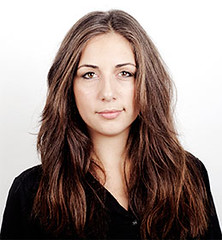
Betina Garcia is a documentary photographer based in Copenhagen, Denmark. She works as a freelancer for some of the biggest Media outlets and organizations in Denmark while doing personal projects. She completed a bachelor degree in Photojournalism from the Danish School and Media in 2016 and studied one semester at Western Kentucky University. For 18 months she interned at Scanpix, the biggest picture agency in Scandinavia. Driven by curiosity and a quest for finding out who people are and what they are motivated by she wants to expand people’s perspective on life whether the subject is covering women’s issues, gender identity or immigration.
She works on long term projects focusing on the Hispanic community and gender identity in the South of the US. Her work have been published in various media outlets including Refinery29, DR, Berlingske, Jyllandsposten and BT. In 2016 she attended the Eddie Adams workshop and has been honored in the College Photographer of the Year Competition in the feature, documentary and portfolio category.
For portfolio check out my website:
For daily work check out my Instagram: